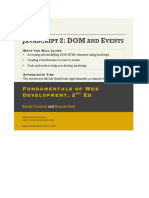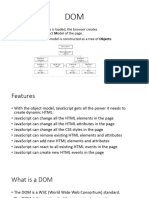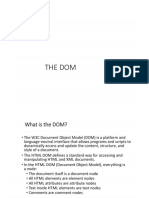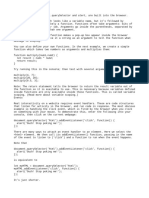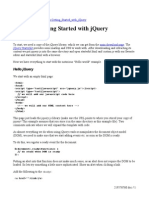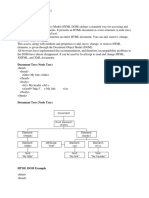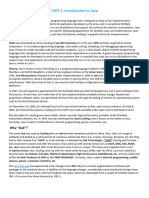0% found this document useful (0 votes)
21 views13 pagesDocument Object Model (DOM)
The Document Object Model (DOM) is a programming interface that represents web pages as a hierarchical tree structure of nodes, allowing developers to manipulate HTML elements. It includes methods for selecting elements, handling events, and processing forms, enabling dynamic interactions on web pages. The document outlines various aspects of the DOM, including collections of related objects, event handling, and form processing techniques.
Uploaded by
phtkgmzCopyright
© © All Rights Reserved
We take content rights seriously. If you suspect this is your content, claim it here.
Available Formats
Download as PPTX, PDF, TXT or read online on Scribd
0% found this document useful (0 votes)
21 views13 pagesDocument Object Model (DOM)
The Document Object Model (DOM) is a programming interface that represents web pages as a hierarchical tree structure of nodes, allowing developers to manipulate HTML elements. It includes methods for selecting elements, handling events, and processing forms, enabling dynamic interactions on web pages. The document outlines various aspects of the DOM, including collections of related objects, event handling, and form processing techniques.
Uploaded by
phtkgmzCopyright
© © All Rights Reserved
We take content rights seriously. If you suspect this is your content, claim it here.
Available Formats
Download as PPTX, PDF, TXT or read online on Scribd
/ 13




